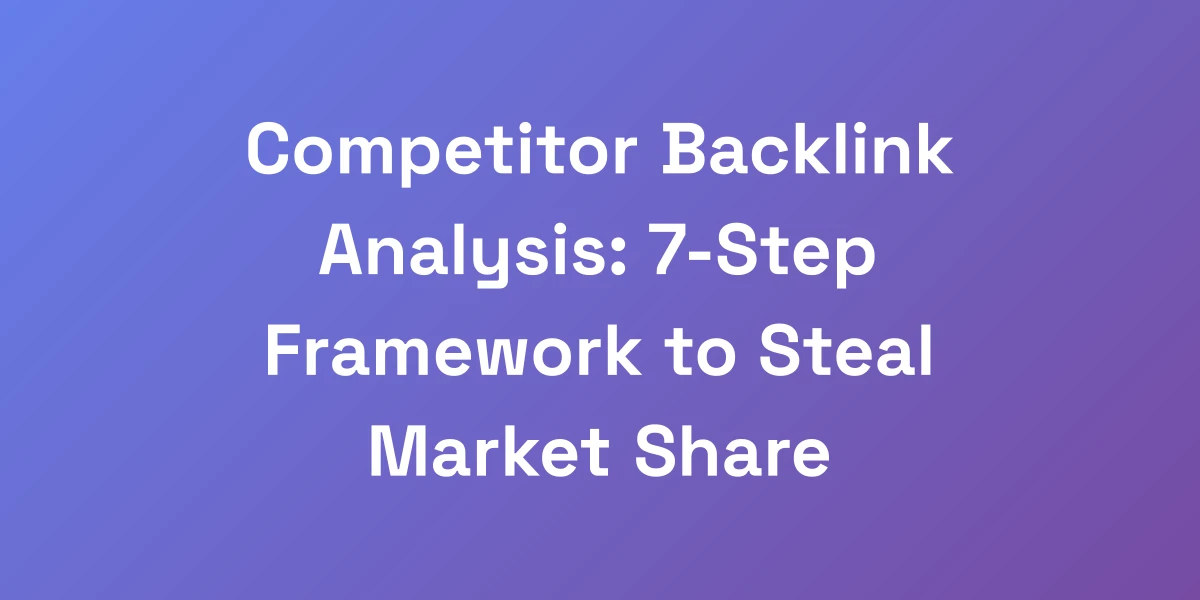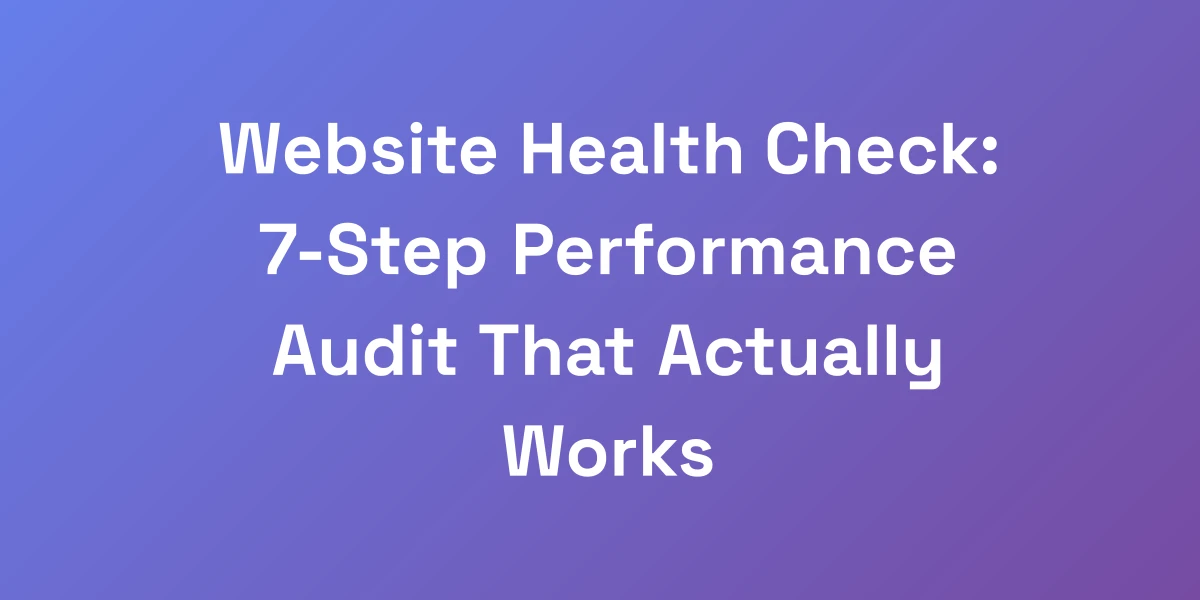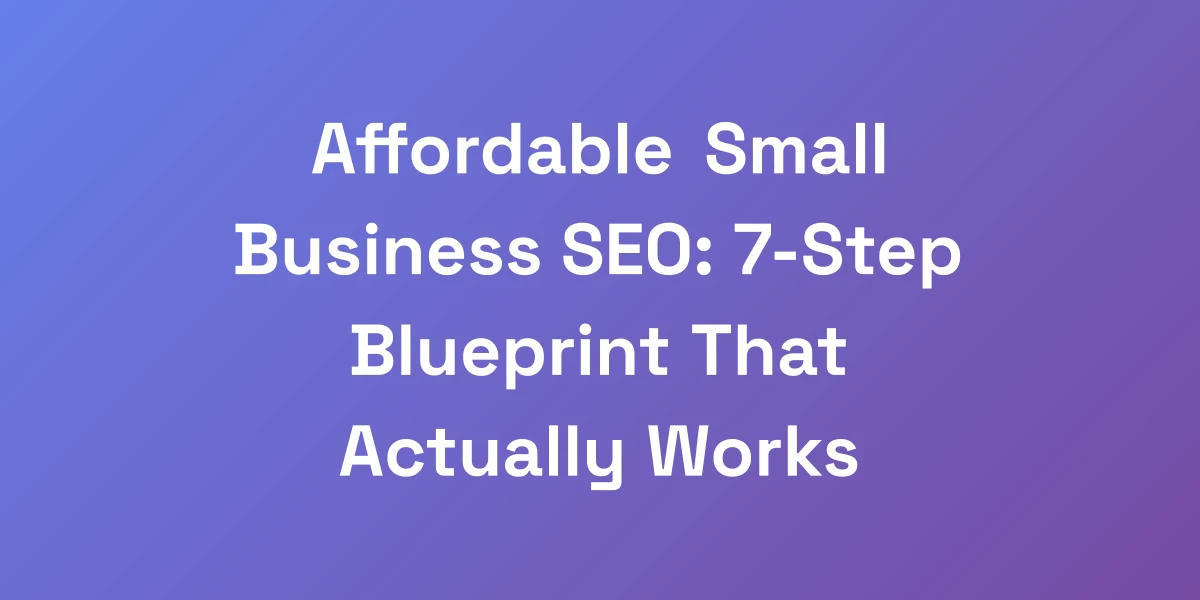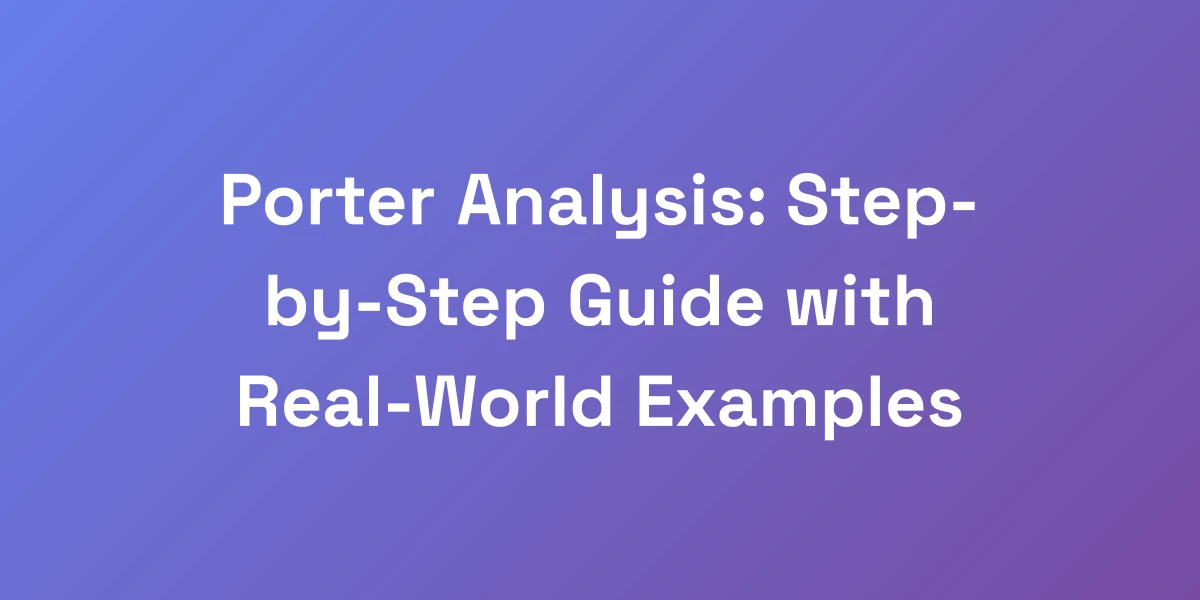
Competitor Analysis Examples: 5-Step Framework That Actually Works
Mar 18, 2025 | By [email protected]
Introduction: The Hidden Power of Competitor Analysis
Ever felt like you’re spinning your wheels, pouring resources into strategies that just don’t click?
We’ve been there too. The struggle isn’t about hard work; it’s about smart work.
Enter competitor analysis – the game-changer that transforms your business approach.
Imagine having a blueprint of what your competitors are doing right, and more importantly, where they’re falling short.
Sounds powerful, right? That’s because it is.
But here’s the kicker: most businesses are using outdated frameworks that don’t deliver results.
So, what’s the alternative? A streamlined, actionable 5-step framework that actually works.
In this article, we’ll dive deep into proven competitor analysis examples that have driven millions in additional revenue.
Ready to unlock the hidden potential of your market? Let’s get started.
Why Most Competitor Analysis Frameworks Fail (And What Actually Works)
Let me be direct – 90% of competitor analysis frameworks are complete garbage. They have you collecting useless data points that don’t move the needle.
Here’s the truth: effective competitor analysis isn’t about gathering every piece of information – it’s about identifying the specific insights that will make your business more money.
In this guide, we’re going to show you the exact framework we’ve used to help companies generate millions in additional revenue by strategically analyzing their competition.
No fluff, no theory – just practical steps that drive results.
Common Mistakes in Traditional Competitor Analysis
First up, let’s talk about the pitfalls. Many businesses fall into these traps:
- Data Overload: Gathering massive amounts of data without a clear purpose.
- Lack of Focus: Focusing on every competitor, not just the key players.
- Ignoring Revenue: Not tying analysis directly to revenue opportunities.
- Static Approach: Failing to update analysis regularly, leading to outdated insights.
- Tool Dependency: Over-reliance on tools without a strategic framework. To mitigate this, consider using SEO automation software.
Sound familiar? These mistakes can derail your entire strategy, leaving you with insights that don’t translate into action.
The Revenue-Focused Analysis Framework
What if we flipped the script? Instead of collecting data aimlessly, what if every step of your analysis was directly tied to boosting revenue?
Our revenue-focused framework zeroes in on the metrics that matter, ensuring every insight has a clear path to financial gain.
This approach isn’t about being exhaustive; it’s about being strategic.
Key Metrics That Actually Matter
Metrics drive decisions. But not all metrics are created equal.
Focus on those that directly impact your bottom line:
- Customer Acquisition Cost (CAC): How much are you spending to gain a new customer?
- Customer Lifetime Value (CLV): What’s the total revenue you can expect from a customer over their lifespan?
- Market Share: How much of the market do you control compared to your competitors?
- Revenue Growth Rate: How quickly is your revenue increasing over time?
- Conversion Rates: How effective are your competitors at turning leads into customers? Landing page SEO techniques can significantly improve these rates.
Tying these metrics to your analysis ensures every data point serves a purpose.
Setting Up Your Analysis for Actionable Results
Gathering data is pointless without actionable insights.
Here’s how to set up your analysis:
- Define Clear Objectives: What do you want to achieve with this analysis?
- Identify Key Competitors: Focus on those who pose the biggest threat or opportunity.
- Select Relevant Metrics: Choose metrics that align with your objectives.
- Create a Data Collection Plan: Determine where and how you will gather your data.
- Analyze and Interpret: Turn raw data into actionable insights.
By following these steps, your analysis becomes a strategic tool rather than a mere data dump.
Tools vs. Strategy: Finding the Right Balance
Tools can make life easier, but they shouldn’t drive your strategy.
Strategy first, tools second – that’s our mantra.
Choose tools that enhance your strategy, not the other way around. Tools like Klue, Crayon, and Kompyte provide real-time insights into competitive intelligence tools, but without a solid framework, their data can be overwhelming. Additionally, implementing white label SEO can help scale your operations without increasing overhead.
Find the balance where tools support your strategic objectives, making your analysis both efficient and effective.
Step 1: Market Position Mapping – Where Money Flows
The first step is understanding where the money is actually flowing in your market. Most businesses waste time analyzing competitors who aren’t even taking their customers.
Instead, we’re going to create a precise map of your market’s money flow. This means identifying which competitors are actually capturing the highest-value customers and understanding exactly how they’re doing it.
I’ll show you how to create a visual money-flow map that reveals hidden opportunities your competitors are missing.
Creating Your Market Value Map
Start by outlining the major players in your industry. Not just anyone, but those who are pulling in the most revenue.
Visualization is key. Use strategy mapping tools like Miro for collaborative brainstorming or Lucidchart for detailed diagrams.
This map should highlight the flow of money between different competitors and customer segments, revealing where the primary value lies.
Identifying High-Value Customer Segments
Not all customers are created equal. Some segments bring in significantly more revenue.
Analyze which customer groups are most profitable for your competitors. Are they targeting enterprise clients or focusing on high-volume, low-margin customers?
By pinpointing these high-value segments, you can tailor your strategies to attract the most lucrative customers.
Analyzing Competitor Revenue Streams
Next, dive into how your competitors are making their money.
Are they relying on subscription models, one-time sales, or diversified income streams?
Understanding their revenue streams helps you identify potential gaps and opportunities in your own approach.
Spotting Market Gaps and Opportunities
With your market value map in hand, look for areas where competitors are underperforming.
These gaps could be untapped customer segments, underserved regions, or products that are missing key features.
Exploiting these gaps allows you to position yourself as the go-to solution, capturing market share where others have failed.
Tracking Customer Migration Patterns
Finally, monitor how customers move between competitors.
Why are they leaving one company for another? What triggers their decision?
By understanding these migration patterns, you can anticipate shifts in customer loyalty and proactively position your offerings to retain and attract customers.
Step 2: Offer Analysis – Decoding What Sells
Your competitors’ offers tell you everything about what customers are actually willing to pay for.
The key is knowing how to decode these offers to reveal the underlying value propositions that drive purchases.
We’re going to show you our exact process for breaking down competitor offers to identify the specific elements that trigger buying decisions.
This isn’t about copying – it’s about understanding the psychological triggers that make customers open their wallets.
Dissecting Competitor Value Propositions
Start by analyzing what unique value your competitors are offering.
What promises are they making to their customers? How do they differentiate their products or services?
By understanding their value propositions, you can identify what resonates with customers and what gaps you can fill.
Price Point Analysis and Strategy
Price is a powerful lever. Analyze your competitors’ pricing strategies to see where they position themselves.
Are they premium, mid-tier, or budget? How do their prices compare to the value they offer?
This analysis helps you determine where you can competitively position your offerings, whether it’s through premium pricing or strategic discounting.
Feature-to-Benefit Translation
Features are the tangible aspects of a product, but benefits are what truly drive purchases.
Map out each feature of your competitors’ products and translate them into the benefits they provide to the customer.
This helps you understand not just what they offer, but why it matters to the customer.
Unique Selling Proposition Comparison
What makes your competitors stand out? Their Unique Selling Proposition (USP) is crucial.
Compare their USPs to yours. Are there areas where you can differentiate further?
Perhaps they emphasize speed, while you could focus on personalization or superior customer support.
Customer Psychology Insights
Understanding the psychological triggers behind purchasing decisions is gold.
Why do customers choose one brand over another? Is it trust, social proof, or perceived value?
By tapping into these psychological drivers, you can craft offers that hit the right emotional chords with your audience.
Step 3: Marketing Channel Effectiveness Breakdown
Stop guessing which marketing channels work. Your competitors have already spent millions testing them.
We’re going to reverse engineer their marketing spend to see exactly where they’re getting the best ROI.
I’ll show you how to track their channel performance, estimate their customer acquisition costs, and identify which channels are actually profitable.
This is about finding the marketing goldmines your competitors have already discovered.
Traffic Source Analysis
Identify where your competitors are driving traffic from. Is it organic search, paid ads, social media, or referrals?
Use tools like SEMrush or Ahrefs to analyze their traffic sources and determine which channels are most effective for them.
This insight allows you to prioritize similar channels or explore untapped ones.
Content Strategy Evaluation
Content is king, but not all content is created equal.
Examine the type, quality, and frequency of your competitors’ content. Are they blogging regularly, producing video content, or leveraging podcasts?
Identify what content resonates most with their audience and consider how you can elevate your own content strategy to outperform them. For enhanced results, leverage elite content marketing SEO services.
Social Media Presence Assessment
Social media can be a powerful tool for engagement and brand awareness.
Analyze which platforms your competitors are active on and how they interact with their audience.
Look for patterns in engagement rates, content types, and follower growth to uncover strategies that work and areas where you can innovate.
Advertising Campaign Analysis
Paid advertising can provide immediate visibility, but it’s essential to understand its effectiveness.
Investigate the types of ads your competitors are running, their messaging, and their targeting strategies.
Tools like AdEspresso or SpyFu can help you dissect their ad campaigns and learn from their successes and failures.
ROI Channel Mapping
Not all channels are created equal. Determine which channels offer the highest return on investment for your competitors.
By mapping out their ROI across different channels, you can allocate your marketing budget more effectively, focusing on channels that deliver the most bang for your buck.
Step 4: Customer Experience Journey Mapping
The fastest way to overtake competitors is to exploit the gaps in their customer experience.
We’re going to create a detailed map of your competitors’ entire customer journey, from first touch to post-purchase.
This reveals critical weakness points where you can create immediate competitive advantages.
I’ll show you how to identify and exploit these gaps to steal their best customers.
Mapping the Sales Funnel
Understanding your competitors’ sales funnels provides insights into how they attract, convert, and retain customers.
Identify each stage of their funnel – from awareness and consideration to decision and loyalty.
Analyze what tactics they use at each stage and evaluate their effectiveness. This helps you identify opportunities to optimize your own funnel.
Customer Service Analysis
Customer service can make or break a brand.
Evaluate how your competitors handle customer inquiries, complaints, and support. Are they responsive, empathetic, and effective?
By identifying shortcomings in their customer service, you can position your business as the superior alternative.
Post-Purchase Experience Review
The customer journey doesn’t end at purchase. Post-purchase experience is crucial for retention and referrals.
Assess how your competitors engage with customers after a sale. Do they offer follow-up support, loyalty programs, or personalized communication?
Enhancing your post-purchase experience can significantly boost customer satisfaction and lifetime value.
Pain Point Identification
Every customer has pain points – problems that need solving.
Identify the common pain points that customers face with your competitors. This could be anything from poor website navigation to lackluster product quality.
By addressing these pain points in your own offerings, you provide a more compelling solution to the market.
Loyalty Program Comparison
Loyalty programs can be a powerful tool for retaining customers.
Compare the loyalty programs of your competitors. What rewards do they offer? How easy is it to earn and redeem points?
Use this analysis to design a loyalty program that offers greater value and incentivizes customers to choose you over the competition.
Step 5: Action Plan Development
Analysis without action is worthless.
This final step transforms your competitor insights into a concrete battle plan.
We’re going to create a prioritized action list based on the highest-impact opportunities you’ve discovered.
I’ll show you how to develop a 30-60-90 day implementation plan that focuses on the moves that will generate the fastest ROI.
This isn’t about long-term strategy – it’s about immediate actions that drive immediate results.
Prioritizing Competitive Opportunities
With a multitude of opportunities identified, it’s crucial to prioritize them based on impact and feasibility.
Focus on actions that offer the highest return with the least resistance. This ensures you tackle the most pressing areas first, driving quick wins and building momentum.
Creating Your Action Timeline
Develop a clear timeline outlining when each action will be executed.
Break down your plan into manageable phases – 30, 60, and 90 days. Assign deadlines and set milestones to track your progress and stay on course.
A structured timeline helps maintain focus and ensures that actions are implemented systematically.
Resource Allocation Strategy
Determine the resources required for each action item. This includes budget, personnel, and tools.
Allocate resources efficiently to ensure that each initiative has what it needs to succeed. Avoid overcommitting by balancing resource distribution based on priority. Consider partnering with the best SEO services for small business to optimize your strategy effectively.
Implementation Roadmap
Create a detailed roadmap that outlines the steps needed to execute each action item.
Include specific tasks, responsible parties, and deadlines. A well-defined roadmap provides clarity and direction, minimizing the risk of miscommunication and delays.
Success Metrics and KPIs
Define clear metrics to measure the success of your actions.
These Key Performance Indicators (KPIs) should align with your initial objectives and provide tangible evidence of progress.
Regularly monitor these metrics to assess the effectiveness of your strategies and make necessary adjustments.
Conclusion: Turning Analysis Into Action
Competitor analysis isn’t just a box to check off – it’s the foundation of strategic growth.
By implementing our 5-step framework, you transform raw data into actionable insights that drive real results.
Remember, the goal isn’t to mimic your competitors but to understand them deeply and leverage that knowledge to carve out your unique position in the market.
Ready to take your competitor analysis to the next level? Start with market position mapping, decode what sells with offer analysis, harness the power of effective marketing channels, fine-tune the customer experience, and develop a robust action plan.
Don’t wait for competitors to outpace you. Equip yourself with the right tools and strategies to stay ahead.
We’d love to hear how you’re applying these steps to your business. Share your experiences and questions in the comments below, and let’s grow together.
Take the first step today – and watch your business soar.








